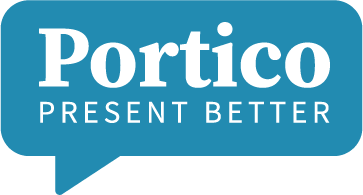This year a request kept coming up from our clients. How can we answer the question, “What do you do?”
It might seem simple enough, but think about how your answer might change if you found yourself in one of the following situations:
- A member of the Fortune 500 announced it was going to acquire your company.
- The election results meant that you needed to prepare for a different presidential transition than you anticipated.
The risk of relying on “Title and Task”
For our clients who were part of an M&A in 2016 and whose work is directly or heavily affected by politics, the standard answers weren’t enough.
Why? Because we typically answer the question, “What do you do?” with a title and a list of activities. We often rely on acronyms and jargon that don’t translate to people who work outside of our company or industry silo.
We can get by on this approach when speaking to leaders from our own organization; we’re (mostly) working from a similar set of assumptions. However, when we use the “title and task” approach to explaining our work to outsiders, we miss out an opportunity to explain how it fits within the larger mission. We make it harder for new leaders to understand how our work creates or adds value.
Keep in mind new leaders are under pressure to make quick and sometimes dramatic decisions. They might not linger to probe and ask what we actually mean. You’ve just helped them make one choice.
Even if you’re not in a time of transition, if we don’t know what our colleagues do, are you open to genuine collaboration and all of those things that management gurus say make the difference between mediocre and exceptional performance? (On a related note, M&A activity is expected to increase in 2017)
Question of the Year Challenge: “What do you think I do?”
Find out how well you’ve been answering this question by taking our holiday challenge. Over the next few weeks of office, social and family gatherings, asking colleagues, siblings, parents, children and great aunts that very question, “What do you think I do?”
If it doesn’t match what it is that you actually do, it’s time to spend some time on how to answer this question.
Here are a few steps:
- Strip out the acronyms and the titles.
- Find a starting point that others might relate to – even if you’re in highly technical and complex field – and frame your work in the other person’s worldview.
- Share an example of what questions you ask at work and what kinds of problems you’re trying to solve.
- Then ask them again: “What do you think I do?”
Uncle John and Aunt Martie will appreciate the time you took to provide context, and those nephews and nieces might look at you with a newfound respect. Plus, you will be more prepared to interact with people coming into your life who may be making decisions about your professional future.
Happy Holidays!



